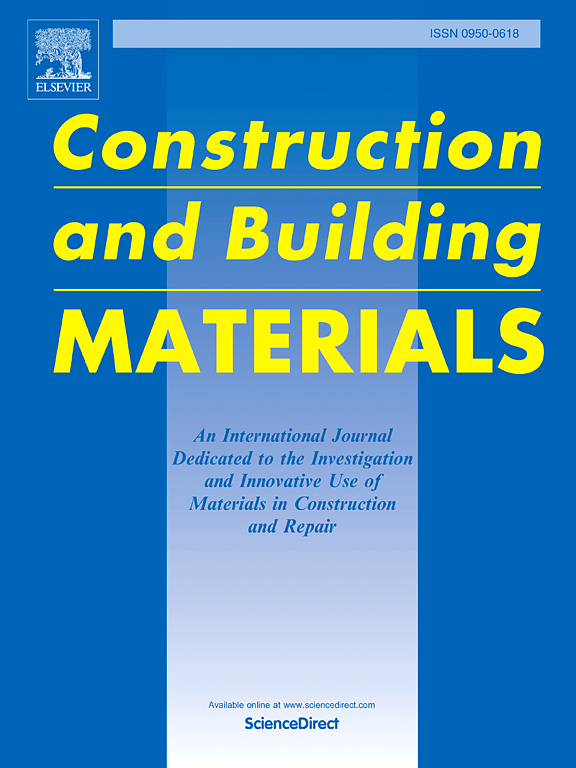Mechanical analysis of cement-biochar composites using in-situ X-ray microtomography and digital volume correlation
IF 8
1区 工程技术
Q1 CONSTRUCTION & BUILDING TECHNOLOGY
引用次数: 0
Abstract
This study addresses biochar as a potential carbon-sequestering filler in cement and examines its effect on mechanical properties using X-ray computed tomography (XCT) and digital volume correlation (DVC). DVC was reliably used to measure global displacement and has proven to be an effective method for correcting displacement data obtained from mechanical tests conducted without traditional instrumentation, such as extensometer. This made it possible to measure strain and Young's modulus accurately. The results demonstrate that while 5 vol% biochar replacement had minimal effect on mechanical properties, a 25 vol% biochar replacement caused a 35 % reduction in Young’s modulus and 40 % reduction in the ultimate compressive strength. Additionally, DVC detected strain concentrations and predicted material failure locations even when cracks could not be quantified using XCT alone. Moreover, the study reveals that biochar particles, due to their sharp geometry, increase internal shear strain during uniaxial compression, unlike round phases such as pores.
水泥-生物炭复合材料的原位x射线微层析成像和数字体积相关力学分析
本研究探讨了生物炭作为水泥中潜在的固碳填料的作用,并利用x射线计算机断层扫描(XCT)和数字体积相关(DVC)研究了生物炭对水泥力学性能的影响。DVC可靠地用于测量整体位移,并且已被证明是一种有效的方法,可以校正在没有传统仪器(如延伸计)的情况下进行的机械测试所获得的位移数据。这使得精确测量应变和杨氏模量成为可能。结果表明,虽然5 体积%的生物炭替代对力学性能的影响最小,但25 体积%的生物炭替代导致杨氏模量降低35 %,最终抗压强度降低40 %。此外,即使仅使用XCT无法量化裂纹,DVC也可以检测应变浓度并预测材料的失效位置。此外,研究表明,与孔隙等圆形相不同,生物炭颗粒由于其尖锐的几何形状,在单轴压缩过程中会增加内部剪切应变。
本文章由计算机程序翻译,如有差异,请以英文原文为准。
求助全文
约1分钟内获得全文
求助全文
来源期刊

Construction and Building Materials
工程技术-材料科学:综合
CiteScore
13.80
自引率
21.60%
发文量
3632
审稿时长
82 days
期刊介绍:
Construction and Building Materials offers an international platform for sharing innovative and original research and development in the realm of construction and building materials, along with their practical applications in new projects and repair practices. The journal publishes a diverse array of pioneering research and application papers, detailing laboratory investigations and, to a limited extent, numerical analyses or reports on full-scale projects. Multi-part papers are discouraged.
Additionally, Construction and Building Materials features comprehensive case studies and insightful review articles that contribute to new insights in the field. Our focus is on papers related to construction materials, excluding those on structural engineering, geotechnics, and unbound highway layers. Covered materials and technologies encompass cement, concrete reinforcement, bricks and mortars, additives, corrosion technology, ceramics, timber, steel, polymers, glass fibers, recycled materials, bamboo, rammed earth, non-conventional building materials, bituminous materials, and applications in railway materials.
 求助内容:
求助内容: 应助结果提醒方式:
应助结果提醒方式:


